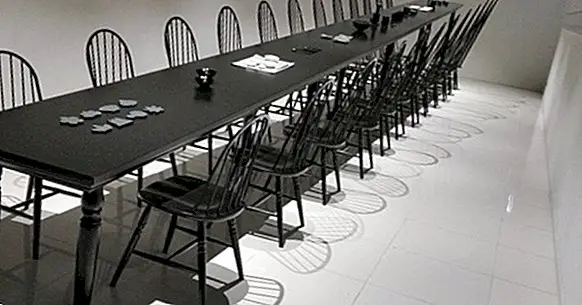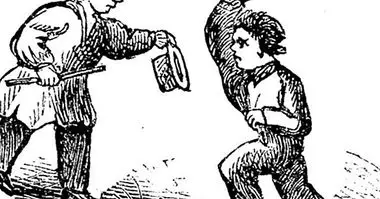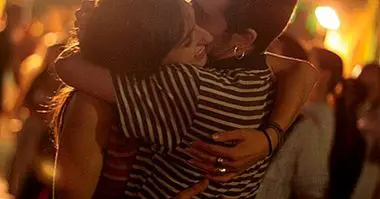Tell me where you sit and I'll tell you how you are (environmental psychology explains it)
If we have suffered for something at Christmas, it has been for family lunches and dinners, one after the other. For this reason, the center of all the interactions at these parties is that table where we all meet , we catch up, eat, laugh and celebrate.
But not all the tables are the same, nor are all the places around. The spatial arrangement exerts different influences on people; in their level of participation and their nature. This is the object of study of environmental psychology and the psychology of groups, disciplines that have detailed what effects your position at the table produces.
Types of arrangements in space
As for a variety of arrangements in space, there are three classic: the focused , the sociologist and the sociópeta .
1. Focused
All seats are oriented in a specific direction. With this provision Attention is focused on a focus and the interaction between users is diminished ; the participation is from the focus to the users and vice versa. This is the typical orientation of the school classrooms, in which students are asked to attend the teacher and do not talk to each other.
2. Sociufuga
All seats are oriented towards the outside. When arranged like this, users turn their backs on each other, so interpersonal communication is limited . The little interaction that occurs in this disposition tends to be intrapersonal and directed to oneself. Although it is not usual, yes it is resorted to sociopathic dispositions, for example in some streams of psychoanalysis in which the patient has his back to the psychotherapist, facilitating introspection.
3. Sociópetas
All seats face inwards. This case is totally contrary; the users are oriented among themselves, facilitating interpersonal communication and taking it towards the intragroup . For processes of trust and cohesion, it is fundamental, because of the facilities it promotes for interaction and exchange. It is the most typical in our society in group meetings, where the focus is the same group.
Sociópeta Disposition: the most usual in daily life
Now, of all these provisions, the one that we find more in our daily life is the sociópeta .
We all meet at tables to be with friends, with family or at work meetings. This makes the sociópeta disposition the most influential in the areas of our lives and from which we can get the most out of knowing it. Within a sociópeta disposition depending on where you place yourself, you do not participate in the same way, nor with whom. If the orientation has its effects, so does the geometry.
Square
A square table has all four sides the same, so everyone has the same option to speak to the group and it does not seem that great differences are marked . However, it does influence smaller relationships, in dyads or triads. People who sit next to each other, that is, in adjoining seats, tend to cooperate, to give each other mutual reinforcement and to agree. On the other hand, in opposite seats, competition tends to favor, favoring disagreements and questions. Of course, as a disposition as in another, there is a greater degree of interaction than if we sit in the corners.
Rectangular
In the rectangular tables there are two narrower sides where the head effect occurs: by occupying this position, more status is conferred . In the head there is no such facility of communication as in the middle of the wide sides, since it limits the eye contact and costs more to see you. However, when talking, attention is attracted more easily, since the same leaks from the table direct the gaze towards the head and the person is facilitated as a focus. As for the broad sides, if someone is in the center, it shows that that person wants to get involved and interact. In contrast, those in the corner prefer to stay out, see what is cooked first and then intervene or not. Participant and initiator roles in the center and observer and follower in the corners are facilitated.
Circular
In circular arrangements the orientation of the seats does not change as drastically as in the more rigid geometric shapes, such as square and rectangular. Because of that, the above effects tend to decrease, for example, there is no location that denote higher status , nor a place in which one can take shelter, since all are equally exposed.However, there is the Steinzor effect, which tends to interact to a greater degree with the people one has in front, for having greater eye contact; So if you have something pending to say to someone, sit down, that will help you.
Other environmental factors
Other environmental factors of the group ecology may be temperature, which at high levels promotes irritability or noise as a cause of stress. Even the same size of a room can influence according to the number of people, since it is not the same being five, making the meeting in a large room or in a small room. But of all of them, the most controllable is where we sit and, who knows, maybe next Christmas we want to change places .



















